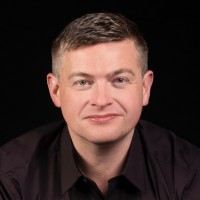Supersonic Commercial Flight is Making a Comeback (4 mins)
Notes
Jolie Hales:
Chuck Yeager. Concorde. And a bullwhip. All have broken the sound barrier. But forget about the bullwhip for a second.
What about supersonic flight?
Chuck Yeager was the first man to fly faster than the speed of sound, which is around 767 miles per hour. But that was a single person in a small plane.
What about commercial supersonic flight? Well, there was Concorde.
Developed as a joint effort between the French and British governments in the 1960s, Concorde took its first flight in 1969, and flew commercially via Air France and British Airways until its retirement in 2003. At maximum speeds of 1,354 miles per hour, which is significantly faster than the 550 miles per hour of today’s typical commercial flights, a round trip from New York to London on Concorde today — should it still be in operation — would only cost you the equivalent of around 20-thousand U.S. dollars.
And two decades after Concorde’s retirement, we have yet to put another commercial jet in the skies at supersonic speeds.
But that’s about to change.
Meet Blake Scholl, CEO of Boom Supersonic and undercover superhero. This is Blake speaking at the Big Compute Conference in early 2020, right before the global pandemic forced conferences to go virtual. Blake has a goal of bringing supersonic flight back as a real commercial option by 2030.
Blake Scholl:
At Boom, we believe that life happens in person, and that real face time beats FaceTime. And so our vision is to make the world dramatically more accessible by removing the barriers to travel, which are principally time, money, and hassle.
Jolie Hales:
But why the time gap in supersonic travel development? Well, while Concorde was an impressive machine, it also cost 1-thousand-eight-hundred percent more money than originally estimated to develop. In case you didn’t catch that — that’s 1-8-0-0 percent over budget. And that’s because back in the 1960s, aerospace technology had to be developed and tested physically using wind tunnels and such for every iteration and adjustment, and when you’re working with new technology, you’re bound to run into a lot of unknowns that need adjusting, which in the case of Concorde, meant watching dollars and days disappear.
But today, technological development in aerospace is a whole new ballgame. While physical testing in wind tunnels is still part of the process, a large chunk of research and development is now done digitally through computational simulation using high performance computing, where iterations can happen significantly faster and more economically than Concorde engineers could have ever imagined.
Blake Scholl:
We’ve done about 66 million core hours of computing, mainly through Rescale, since we started the design effort on XB-1. And if you asked yourself what that would look like in wind tunnel testing, it would be financially and time-wise just absolutely impractical. We’ve been able to test hundreds of iterations of aircraft designs, which you just could not do with wind tunnels.
Jolie Hales:
By running high performance computing simulations in the cloud, a startup like Boom Supersonic is able to speed up and scale out as they see fit while they develop Overture, without reaching into the pockets of any government institution.
Blake Scholl:
We call it Overture because it is an opening, not just in a journey for its passengers, but an opening of a new era of high speed flight.
Jolie Hales:
Major airlines across the globe are already in talks with Boom Supersonic about welcoming Overture to their fleet, including the United States government, which has their eyes on Overture as a potential new Air Force One.
So keep your eyes on the skies, because reimagined commercial supersonic flight is just one awesome innovation coming our way, thanks to the power and speed of virtually unlimited high performance computing.
To see Blake Scholl’s full talk, or learn more about how companies like Boom Supersonic are changing the world, visit BigCompute.org.


